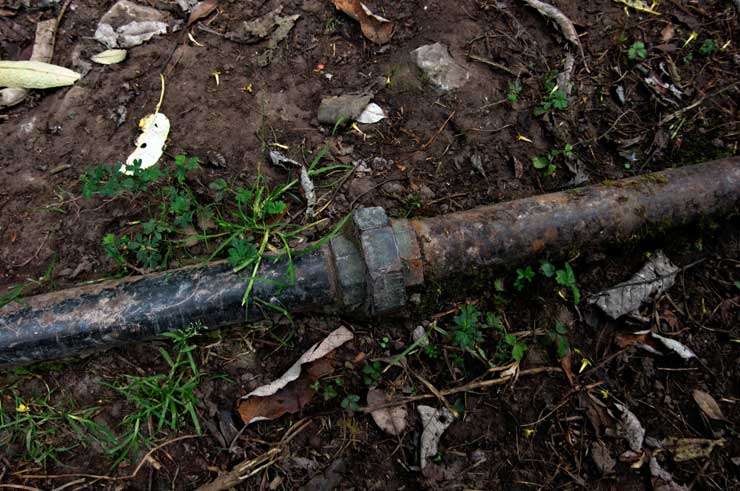A big feature of Auckland’s housing market in 2021 has been the uptick in property values in former state housing suburbs.
In Glenn Innes and Point England, the average property value now sits above $1.4 million, with development-friendly zonings driving house price growth in each suburb as developers snap up ex-state homes on big sections for big money.
In the South Auckland suburbs of Mangere, Manurewa and Otara, land-hungry developers have pushed up house prices more than $200,000 in the last 12 months.
Quarter acre sections are no longer viewed as ideal family plots, but as cash-cows for a city aiming to build its way out of a housing affordability crisis.
Start your property search
New research by OneRoof and its data partner Valocity has found that Auckland has 53,945 quarter acre sections left, but not all sections carry the same value.
James Wilson, head of valuation at Valocity, said that the amount of money a quarter acre section could command depended on its zoning under the Auckland Unitary Plan.
The Terrace Housing & Apartment Building (THAB) zoning was highly prized because it allowed developers to put up multiple terrace houses or five to seven-storey apartment blocks, depending on the size of the land. Also valuable was the Mixed Housing Urban, which allows for housing of up to three storeys in height, while the Mixed Housing Suburban zone allows for one or two-storey standalone homes.
The OneRoof-Valocity research found that Henderson, Glen Eden and New Lynn had the most subdividable quarter acre sections zoned THAB and Mixed Housing Urban. Henderson had 506 sections that fit the bill, while Glen Eden and New Lynn had 504, and 460 respectively.

Valocity director of valuations James Wilson says homeowners should research the potential of their properties before going to market. Photo / Supplied
They were closely by Otara, Massey and Manurewa, which had respectively 417,329 and 321 favourably zoned quarter acre sections.
The suburbs with the highest concentration of quarter acre sections zoned THAB, Mixed Housing Urban and Mixed Housing Suburban are Papaptoetoe, Glen Eden, Remuera, Papakura and Massey.
The perfect suburb
Wilson said New Lynn, where the average property value is just over $1m, was ripe for intensification, with 78% of the suburb’s quarter acre sections zoned THAB or Mixed Housing Urban.
The suburb is near to transport corridors and often has a single 1930s to 1950s home on a large site. “Rezoning over the years has already facilitated developers quite actively building in places like New Lynn,” Wilson said.
“There have been some really good examples of new homes being built in New Lynn that make the most of the unitary plan not just for developing for profit, but also for the area where they fit in nicely with their surrounds.
“One thing to add is that New Lynn didn't have the same volume of cross lease properties as other suburbs such as Mt Eden. The development potential in areas with large number of cross leases is not as easy to unlock now.”
Typical of the demand for development properties in New Lynn is the bidding war that broke out last year for a modest three-bedroom home on a quarter acre section on Arawa Street. The THAB zoned property attracted flurry of bids, and eventually sold to a developer for $1.8m - nearly twice its 2017 council valuation.
Henderson, where the average property value is almost $1.2m, ranks highly for all the same reasons as New Lynn, but it has an advantage over other suburbs when it comes to selling development: its homes tend to be smaller and easier to demolish or remove.
“You haven't got as many larger character homes,” Wilson said. “Henderson tends to have a lot of smaller homes sitting on large sites, which makes removal less costly.”
A big problem with connections
Harcourts agent Fiona Li, who specialises in development land in Henderson, said the most popular properties in her patch were those zoned THAB, although recent sales to developers have involved plots that are smaller than 1000sqm. Her most recent sale was to a developer who planned to build four or five houses on a 580sqm site, she said.
A noticeable trend, in Henderson and nearby suburbs, she said, was the building of terrace houses and apartments without garages, says Li. It allowed for more intensification and made the homes more affordable for first home buyers.
She said that the biggest influencing factor for developers right now was connectivity. Sites with poor water, sewage and other connections were often passed over.

Sites that have good connections to water and sewage infrastructure are in demand. Photo / Getty Images
Wilson agreed. “The cost of developing a site can change considerably, depending on the connections to water and sewage pipes. That might inhibit not just the cost of doing it, but whether or not you can or can't develop the site. So connections are really important.”
Beware of low ball offers
Owners in the most desirable areas need to be very wary of buyers approaching them privately in the hope they don’t understand what they’re sitting on. Typically, the private buyers will suggest that the owner will save on real estate agent commissions by selling privately. But they may be offering hundreds of thousands of dollars less than the property is worth.
Li cites an example of a property in Harrington Road in Henderson, where the neighbour offered $900,000 for the property, but she sold it at auction for $1.745m. Selling privately to save agents fees would have been a big mistake. “You want to make money, not save money,” she says.
Homeowners sometimes think, they could unlock the value of their properties by doing the work themselves. That can work. But Wilson says experience does count under the current rules and homeowners might not have the vision to understand what could be done. Developers with prior experience and resources can sometimes arrange for a private plan change and make significant profits.
Likewise, be wary of doing work on the property if it might appeal to developers who would just want to rip it down, said Wilson. “There's no point in building a minor unit out the back of your property. If you think that the property and its zoning will appeal to a developer.
“If you're looking at selling a property like this, take the time to understand the potential. The worst thing you can do is go to market naively.”
That could include areas where intensification is inappropriate, where there are high risk of natural hazards, or the site has heritage value.










































































